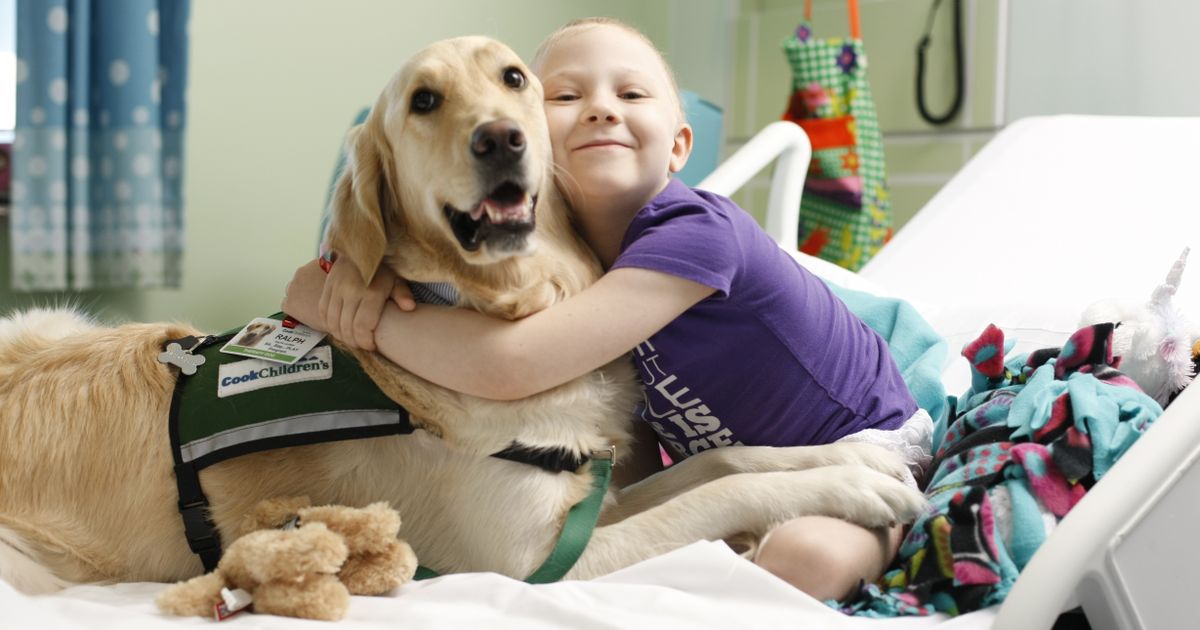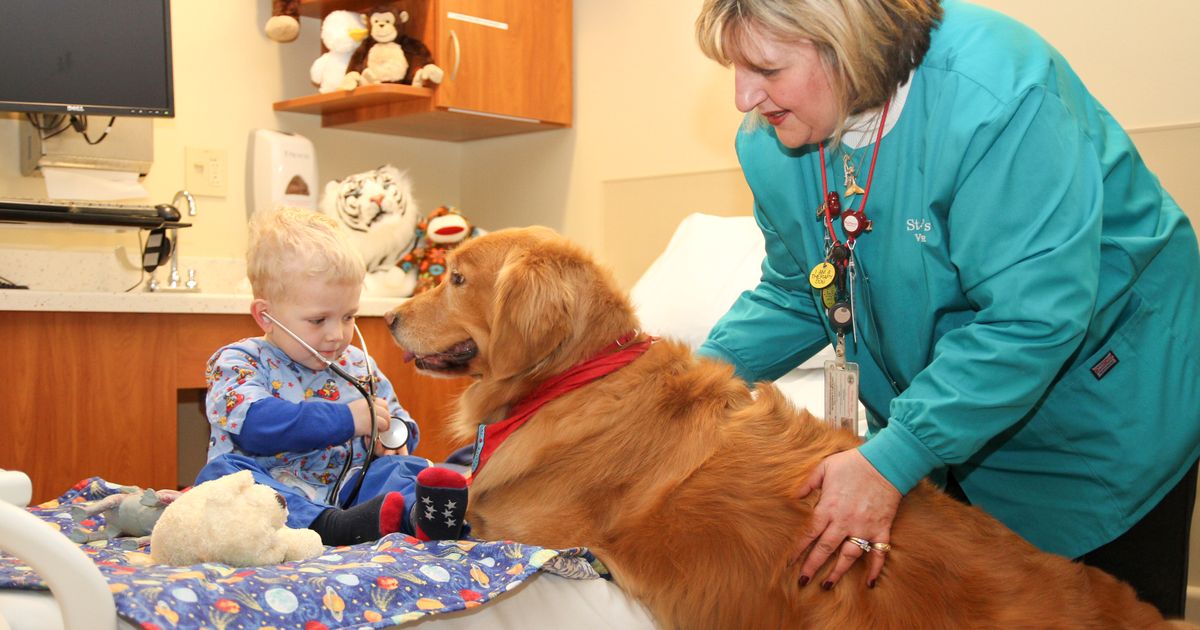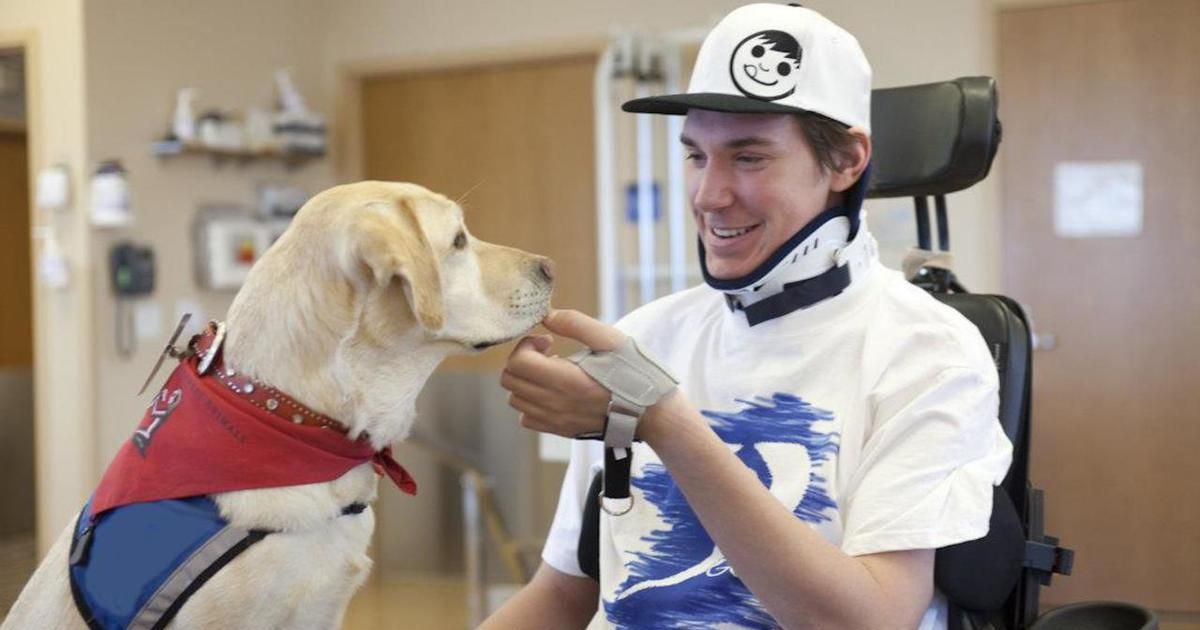The Amazing Benefits Of Pet Therapy
Pets, such as dogs and cats, are known for being irresistibly cute, fluffy, and just downright adorable. Not only do they provide unconditional love and constant companionship, but pets are also an amazing form of therapy for those suffering from physical and mental conditions, and who are often hospitalized. Put your paws up if you want to learn the benefits and the science behind why pet therapy works, and keep reading to 'retrieve' all of these details now!
What Is Pet Therapy?

Pet therapy, also known as animal-assisted therapy (AAT), is a guided interaction between an individual and a trained animal, which usually involves the animal’s owner or handler. The objective of pet therapy is to help an individual, typically a patient in a hospital or care facility, overcome or recover from a health problem or mental disorder. Dogs and cats are the most common animals used in pet therapy, however, horses, guinea pigs, rabbits, fish, and other animals that meet strict criteria can also be used. The type of animal chosen depends on the therapeutic goals of the individual’s treatment plan, what pet the individual prefers, and what their medical care team believes is the best fit.
AAT can sometimes be confused with animal-assisted activities (AAA), as AAT is a formal, structured set of sessions that help patients reach the specific goals of their treatment, whereas AAA is a more casual meeting in which the pet and their owner interact with one or more patients for comfort or recreation.
Pet therapy has numerous benefits for both the animal and the individual interacting with the pet. Keep reading to get an overview of the benefits this form of therapy offers.
Benefits & Goals Of Pet Therapy

The premise behind pet therapy is it builds on the pre-existing human-animal bond, as interacting with a friendly pet can help alleviate various mental and physical issues an individual may face. For instance, pet therapy can help reduce blood pressure and improve cardiovascular health, it releases endorphins that produce a calming effect for the individual, and can overall help alleviate pain, decrease stress, and improve a person’s psychological state.
Pet therapy can be used for a variety of reasons, and defined objectives and goals are an essential part of therapy. Goals of pet therapy programs include increasing self-esteem and confidence, improving motor skills and joint movement, increasing verbal communication, improving assisted or independent movement, developing social skills, and encouraging the participant to join in social interactions. Other benefits of pet therapy associated with a participant’s goals include making the patient happier and less prone to depression and more optimistic, decreasing loneliness and social isolation, reducing boredom, and alleviating anxiety. Furthermore, pet therapy can help children develop empathetic and nurturing skills, and improve the relationship between patient and their healthcare provider.
Next, discover how science has proven the benefits of pet therapy and why it is highly beneficial for the patient, animal, and their family.
Why It Works

Animals have long served as an essential source of social contact and bonding for human beings since the dawn of time, and pet companionship has been associated with improving mental, social, and physical health. Research has proven pet therapy serves as a fantastic aid to relaxation, a decrease in blood pressure, and increased peripheral skin temperature. Recently, a study was conducted on the Pets at Work (PAWS) program and the overall benefits of pet therapy on hospitalized pediatric patients.
The study discovered pet visits provided stress relief, normalized the hospital environment, generated positive rapport and feelings, and improved satisfaction and morale for patients and their families. Pet therapy also had an immense relaxing and stimulatory effects on patients, such as helping calm a child before a procedure or waking a child post-surgery, with these results corresponding with changes in the heart and respiratory rates of the patient.
Continue reading to find out how pet therapy is an extraordinary source of comfort and emotional support for patients in a hospital or care facility.
A Source Of Emotional Support

A similar study was conducted on the emotional impact of a pet therapy program, focusing on Pet Pals on pediatric patients, and how animals help to reduce a hospitalized child’s anxiety and distress. The study found pet therapy compared to child-life group, another form of therapy for children, where children in a hospital setting experienced more anticipatory excitement and displayed a more positive effect when interacting with a pet rather than in group therapy.
Parents’ ratings of their child’s mood were also substantially improved while participating in pet therapy. Another similar study also found pet therapy was highly effective in improving the overall mood and well-being of patients, especially in children. Patients and their parents also experienced an incredible reduction in psychological distress when interacting with a therapy animal. Pet therapy has also shown to help facilitate a patient’s adaptation to the therapeutic process they may be subjected to.
Keep reading to reveal how pet therapy can drastically reduce the physical pain a patient may experience while undergoing treatment.
Animals Can Aid In Pain Management

Further studies have also explored the effectiveness of canine visitation therapy (CVT) in pediatric pain management. The findings revealed a single visit from an animal significantly reduced a patient’s perceived pain and general discomfort after surgery, which suggests pet therapy may have a physical health benefit to it. The logic behind this idea is pets provide a distraction from pain, and are a comforting reminder of home for many of these children. The patients themselves reported the pets were a source of happiness, fun, pleasure, and entertainment, whereas the physical contact provided by the pets contributed to the reduction in perceived pain.
Similar findings have been discovered for hospitalized adults and the benefits of pet therapy. For instance, adult patients experienced a significant improvement in their energy level and respiratory rate, as well as a major reduction in pain and a negative state of mind when interacting with an animal. Specifically, these adult patients showed monumental improvements on several mood state subscales, which included their tension, anxiety, fatigue, and inertia levels, and pet therapy improved a patient’s mood and pain overall.
Next, find out the various types of pet therapy available to those who need this highly interacting and loving form of therapy.
Types Of Pet Therapy

Pet therapy can range from simple, casual visitations to formalized intervention programs, depending on the patient’s needs and goals. There are three different types of pet interactions including passive, low, and active interaction. Passive interaction is when the pet sits or sleeps with the patient, low interaction is when the pet performs occasional tricks for the patient, and active interactive is when the patient and pet engage in lively play or go for a walk. The type of interaction between the pet and patient can change from day-to-day based on the patient’s needs and desires, and the frequency and duration of visits can vary widely, again based on the patient and their family. Overall, pet therapy provides extraordinary benefits for child and adults patients alike, and it is a form of therapy that is highly adaptable to the various needs of the patient.
Keep reading to find out who benefits the most from pet therapy. Yes, it is at least mildly beneficial for everyone, but certain individuals can greatly benefit from some extra affection from a loving dog or cat.
Who Benefits From Pet Therapy?

Pet therapy has been proven to be greatly beneficial for individuals undergoing chemotherapy, residents in a long-term care facility, patients dealing with chronic heart failure, as well as veterans and individuals suffering from post-traumatic stress disorder (PTSD). Children having physical or dental procedures, stroke victims and patients undergoing physical therapy to regain their motor skills, and individuals dealing with mental health disorders also greatly benefit from a visit with a fluffy cat or dog. Also, during a medical procedure, ranging from consultation to surgery, individuals may have less anxiety if a pet is present, and patients undergoing rehabilitation can feel more motivated to recover when working with an animal. Individuals who have sensory disabilities or social interaction problems, such as children with autism, can sometimes communicate more efficiently and easily when a pet is present.
Overall, the benefits of pet therapy are astronomical and can make a real difference in the lives of patients and their families, while they endure numerous challenges while receiving treatment.
